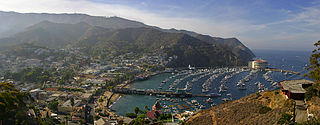
Avalon is the only incorporated city on Santa Catalina Island, in the California Channel Islands, and the southernmost city in Los Angeles County. The city is a resort community with the waterfront dominated by tourism-oriented businesses. The older parts of the town on the valley floor consist primarily of small houses and two and three-story buildings in various traditional architectural styles.

William Mills Wrigley Jr. was an American chewing gum industrialist. He was founder of the Wm. Wrigley Jr. Company in 1891.

The Wrigley Memorial & Botanic Garden is a botanic garden on Santa Catalina Island, California, operated by the Catalina Island Conservancy. It also contains a memorial to William Wrigley Jr.

Two Harbors, colloquially known as "The Isthmus", is a small unincorporated community island village on the island of Santa Catalina Island, California, with a population of 298. It is the second center of population on the island, besides the city of Avalon. It is mainly a resort village. It has only one restaurant, one hotel and one general store. The village has about 150 permanent residents who live on the isthmus year-round. One notable feature was the one-room schoolhouse which closed in 2014.

The Catalina Casino is a large gathering facility located in Avalon on Santa Catalina Island, off the coast of Los Angeles in California. It is the largest building on the island and the most visible landmark in Avalon Bay when approaching the island from the mainland.
The California Art Club (CAC) is one of the oldest and most active arts organizations in California. Founded in December 1909, it celebrated its centennial in 2009 and into the spring of 2010. The California Art Club originally evolved out of The Painters Club of Los Angeles, a short-lived group that lasted from 1906–09. The new organization was more inclusive, as it accepted women, sculptors and out-of-state artists.

SS Catalina, also known as The Great White Steamer, was a 301-foot steamship built in 1924 that provided passenger service on the 26-mile passage between Los Angeles and Santa Catalina Island from 1924 to 1975. According to the Steamship Historical Society of America, Catalina has carried more passengers than any other vessel anywhere. From August 25, 1942 until April 22, 1946 the ship served as the Army troop ferry U.S. Army FS-99 at the San Francisco Port of Embarkation transporting more than 800,000 troops and other military personnel between embarkation camps and the departure piers. After a period of service as a floating discothèque, the ship ran aground on a sandbar in Ensenada Harbor in 1997 and partially sank on the spot. It was scrapped in 2009.
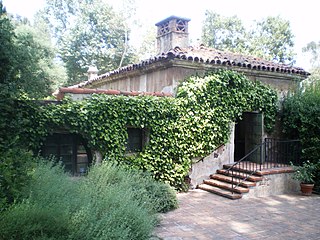
El Molino Viejo, also known as The Old Mill, is a former grist mill in the San Rafael Hills of present-day San Marino, California, United States, and was built in 1816 by Father José María de Zalvidea from the Mission San Gabriel Arcángel. It is the oldest commercial building in Southern California, and was one of the first ten sites in Los Angeles County to be listed on the National Register of Historic Places, receiving the recognition in 1971. The Old Mill has also been designated as a California Historical Landmark.

The SS Cabrillo was a wooden passenger steamship operating in Los Angeles County, California during the first half of the 20th Century. The steamship provided transportation between the Port of Los Angeles and the ports of Avalon and Two Harbors on Santa Catalina Island.

Charles Frederick Holder (1851–1915) was an American naturalist, conservationist, and writer who produced over 40 books and thousands of articles. Known as a pioneer of big-game fishing, he founded and led the Tuna Club of Avalon, credited as the first game fishing organization. He was socially active in Pasadena, California, where he was a trustee of Throop College and co-founder of the Tournament of Roses.

Andrew Washington Barrett was a prominent Los Angeles businessman, adjutant general of the California National Guard, director of the Sawtelle Veterans Home, member of the governing body of the city of Los Angeles and a California state public official.

Santa Catalina Island is a rocky island off the coast of Southern California in the Gulf of Santa Catalina. The island is 22 mi (35 km) long and 8 mi (13 km) across at its greatest width. The island is located about 29 mi (47 km) south-southwest of Long Beach, California. The highest point on the island is Mount Orizaba. Geologically, Santa Catalina is part of the Channel Islands of California archipelago and is the easternmost of the Channel Islands. Politically, Catalina Island is part of Los Angeles County in District 4. Most of the land on the island is unincorporated and is thus governed by the county.
David Malcolm Renton, known as "DM", was a builder and business executive in southern California. He is best known for his Craftsman style homes in Pasadena and for the construction of the Casino Ballroom and other homes on Catalina Island in the early 1900s. Renton was influential in the development of Catalina Island under William Wrigley Jr., serving as vice-president of the Santa Catalina Island Company and the Wilmington Transportation Company from 1919 to his retirement in 1936. He also served as president of the Wilmington Catalina Airlines from 1931 to 1942.
Membership discrimination in California social clubs has been based on sex, race, religion, political views and social standing. In the late 1980s, a successful effort was made in many of the clubs to open up membership first to racial or religious minorities and then to women. Strictly private clubs that are not open to the public, and for which tax exemptions are not claimed, maintain their right to discriminate on the basis of sex or race, and all clubs can discriminate on the basis of social standing.

Catalina Pottery is the commonly used name for Catalina Clay Products, a division of the Santa Catalina Island Company, which produced brick, tile, tableware and decorative pottery on Santa Catalina Island, California. Catalina Clay Products was founded in 1927. Gladding, McBean & Co. acquired all of the assets of the company in 1937 and moved all production to its Franciscan dinnerware division in Los Angeles.

George Rufus Shatto was an American real estate developer. He was an early land investor in Los Angeles, California. In 1887 he purchased Santa Catalina Island, California and was the first person to attempt to develop it into a resort destination.
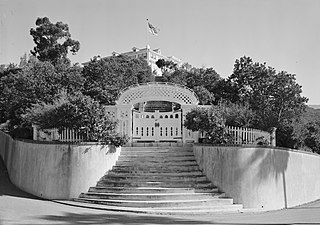
The William Wrigley Jr. Summer Cottage, or "Mount Ada", is a historic residence located at 76 Wrigley Road in Avalon, on Santa Catalina Island, California. It was the former summer mansion and gardens of William Wrigley Jr. (1861–1932), the founder of the Wrigley Company. It is on a hill, overlooking the town and Avalon Bay.
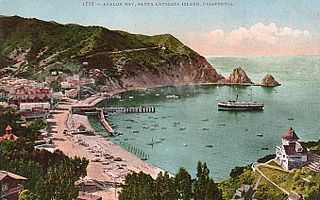
The history of human activity on Santa Catalina Island, California begins with the Native Americans who called the island Pimugna or Pimu and referred to themselves as Pimugnans or Pimuvit. The first Europeans to arrive on Catalina claimed it for the Spanish Empire. Over the years, territorial claims to the island transferred to Mexico and then to the United States. During this time, the island was sporadically used for smuggling, otter hunting, and gold-digging. Catalina was successfully developed into a tourist destination by chewing gum magnate William Wrigley, Jr. beginning in the 1920s, with most of the activity centered around the only incorporated city of Avalon, California. Since the 1970s, most of the island has been administered by the Catalina Island Conservancy.

Los Angeles Yacht Club is a yacht club located in San Pedro, Los Angeles. The Club is a Charter Member of the Southern California Yachting Association.
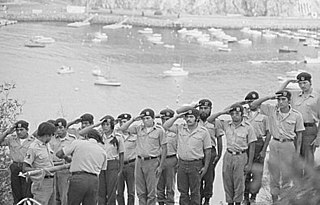
The Occupation of Catalina Island began on August 30, 1972, when the Brown Berets, a Chicano-rights organization, occupied Catalina Island, off the coast of Los Angeles, for three weeks. The Berets, led by their "Prime Minister" David Sanchez, claimed the territory rightfully belonged to Mexico and demanded that its 42,000 acres of undeveloped land be developed into housing.




















